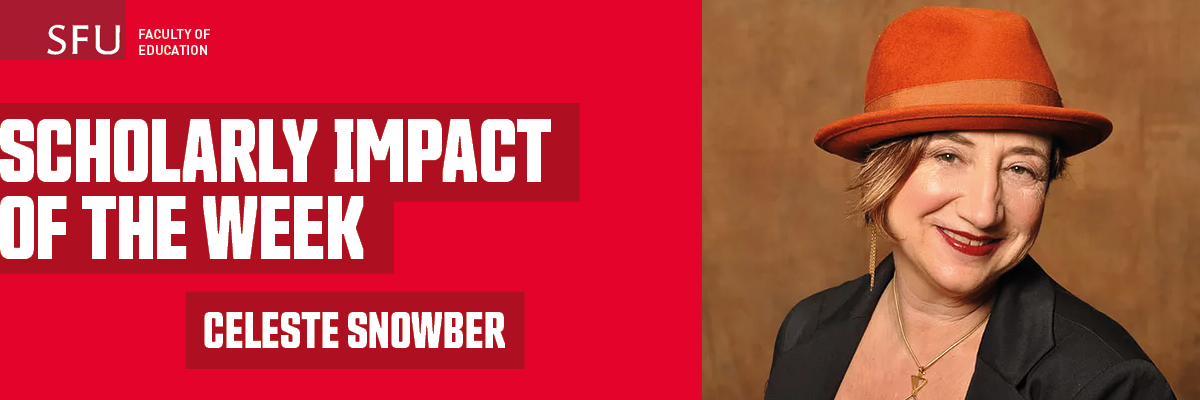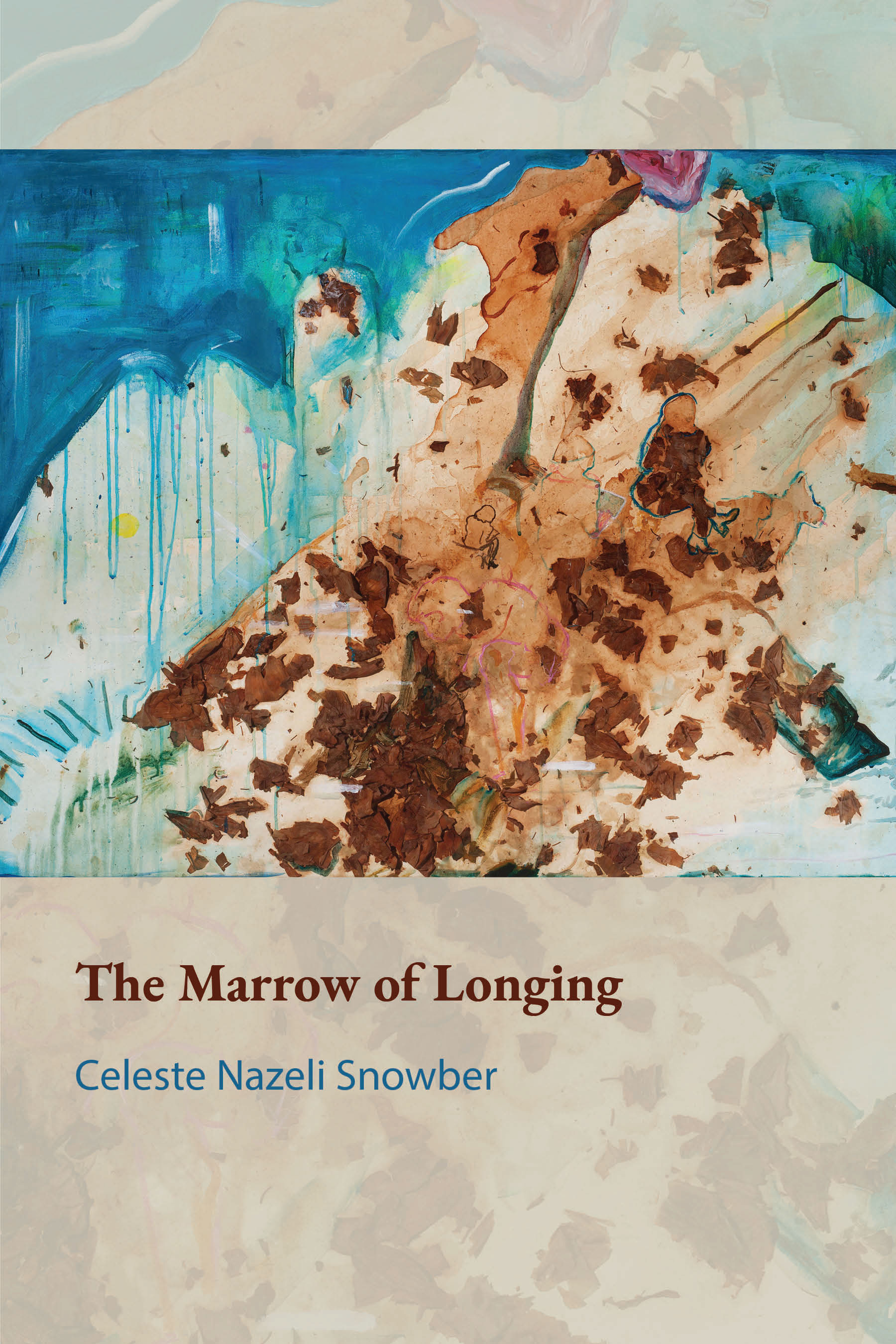
by Heather Sanders
Scholar, dancer and poet Celeste Nazeli Snowber fully understands the restorative and transformative power of art. For over two decades, as a professor of arts education at SFU she has used her proficiency as a performance artist and researcher to inspire other artist-educators to use the arts as a place of discovery, and to express their research in artistic ways.
“We can have scholarship that is deeply alive and beautiful,” says Snowber. “Using my expertise in embodied inquiry, we find out what really matters, what’s visceral and important. I want to break down the barriers of what scholarship can be.”
Snowber’s research interests converge within curriculum theory, arts-based research, dance, somatics, spirituality, poetic inquiry, contemplative and holistic education and embodied ways of knowing. Her work informs the growing field of ecopoetics and arts-based environmental education. In 2016, she was recognized with the Ted T. Aoki Award for Distinguished Service, acknowledging the importance of integrating critical cultural exploration into curriculum, and exploring lived curriculum alongside planned curriculum.
“My work focuses on arts-based research and integrating the arts, in particular poetic inquiry and embodied ways of research and scholarship,” says Snowber, “I don’t separate my identity as a poet from my identity as a scholar, artist or performer. At the heart of my work is the integration between body and mind, physicality and spirituality, and an emphasis on connecting the personal and universal. Poetry is one way of discovering what we know and don’t know.”
Snowber has recently released her third book of poetry, The Marrow of Longing, which traces her journey to connect with her Armenian heritage, and understand her experiences as a descendant of genocide survivors, while providing insights into universal themes of longing and belonging.
The Armenian community resided in the Middle East for thousands of years, alongside the earliest empires of the Persians, Greeks, Romans, Byzantines, and Arabs. They developed unique literature, art, music, textiles, cuisine and architecture. They adopted Christianity and developed a distinct alphabet.
At the start of the 20th century, as the Ottoman Empire began to fall, Armenians, which represented ten percent of the population were persecuted, culminating in the ruthless ethnic cleansing known as the Armenian genocide. It is estimated that between 1915 and 1917, 1.5 million Armenians were murdered, suffering unspeakable brutality including death marches into the Syrian desert.
Celeste Snowber’s mother Grace Terzian left historic Armenia in 1913 just before the start of World War One. Snowber notes that it took decades before she understood how the trauma of the genocide had affected her mother and herself. She wanted to connect with the roots of a deep culture that had been severed, and she wanted to work though these experiences in poetry.
“As a child, I didn’t understand the trauma my mother experienced,” says Snowber. “But as you get older, you see that trauma is really in the body. This is a way to give voice to my own history, or herstory. By allowing it to have a voice, I can move through it. Art becomes a container, an expression, for that which is so difficult, but can also birth something new.”

The Story of One
If we only have fragments
aren’t all our pieces a whole?
what happens to one
happens to all
so much has gone missing
strands of DNA
whisper a mystery
the story of one
is the survival of a nation.
- Celeste Nazeli Snowber
pg. 31 in The Marrow of Longing
Snowber explains that while the book does delve into the heavy themes of generational trauma and loss, it also celebrates the rich and enduring Armenian culture, family and relationships, food and poignant memories. Drawing upon recollections and experiences, her mother’s love letters to her father during World War II, and her own travels to Armenia, the book embraces the depth of her heritage while working through fragments of the past.
“It also celebrates the concept of longing,” reflects Snowber. “The word longing is part of the word belonging. If you listen to Armenian music you can feel a deep sense of longing. And I’ve come to terms with this longing.” The book is appropriately titled the Marrow of Longing because of her ancestry it’s something that Snowber says she can “feel in her bones.”
“I also feel that my ancestors have been with me in this process. Poetry, dance and art are fertile ways to bring together the fragments of ancestral memory, to form a whole.”
“It is my hope that others will see the fragments of their own stories as a place to open up the treasures of cultural identity and see art as a way of healing intergenerational trauma. As I say in one poem, ‘Here I offer fragments, and a fragment can hold a world.’”
Celeste Nazeli Snowber’s book The Marrow of Longing is available through HARP Publishing and the SFU Library. Ten percent of the proceeds from the sale of the book will benefit the Atken Armenian Foundation.
SFU's Scholarly Impact of the Week series does not reflect the opinions or viewpoints of the university, but those of the scholars. The timing of articles in the series is chosen weeks or months in advance, based on a published set of criteria. Any correspondence with university or world events at the time of publication is purely coincidental.
For more information, please see SFU's Code of Faculty Ethics and Responsibilities and the statement on academic freedom.